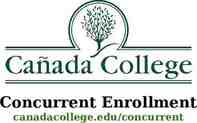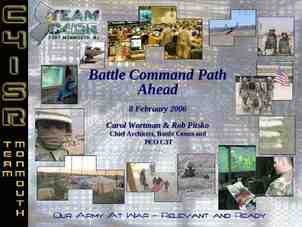Disability: Social Security and SSI AIDS Clinic January 30, 2004
23 Slides781.00 KB
Disability: Social Security and SSI AIDS Clinic January 30, 2004
Social Security Disability Benefits Monthly cash benefit to disabled persons or their dependents Not a needs-based program: eligibility is based on payment of sufficient Social Security taxes Must have worked long enough and recently enough (5 out of last 10 years) Payment amount dependent on wage history
Supplemental Security Income Monthly benefits to aged, blind or disabled persons Eligibility based on financial need, considers income and assets Payment amount supplements any other income up to a maximum Year 2004 maximum payment: 564 per month ( 846 for eligible couple)
Associated Medical Programs SSDI: Medicare Available after two years of SSDI eligibility (29 months after “onset date”) Part A – Hospitalization Part B – Outpatient, tests, etc. ( 66 annual premium and 100 annual deductible) Prescription drug coverage will be weak
Associated Medical Programs SSI: Medicaid Income based program – health care for the poor Automatically available to SSI recipients Pays doctors, prescriptions, but low reimbursement rate to providers
Administrative Process Initial application Reconsideration Administrative Hearing Appeals Council Review Judicial Review (U.S. District Court)
DI and SSI DISABILITY Determinations and Appeals Fiscal Year 2000 Initial Level 1,988,425 Reconsiderations 584,540 ALJ Dispositions 433,584 Appeals Council 122,780 Federal Court Decisions 12,011 Allow 38% Allow 16% Allow 59% Allow 2% Allow 6% Deny 62% Deny 84% Dismiss 12% Deny 29% Dismiss 2% Remand 22% Deny 74% Remand 48% Deny 39% Dismiss 6%
Definition of Disability Severe mental or physical impairment Medically verifiable by lab tests, physical examination or other objective medical procedures has lasted, or is expected to last, at least twelve consecutive months or result in death renders claimant unable to engage in substantial gainful activity (“SGA”)
Five-Step Sequential Evaluation 1. 2. 3. 4. 5. Is the claimant doing Substantial Gainful Activity (SGA)? Does the claimant have a “severe” impairment? Does the impairment meet or equal a listed impairment? Can the claimant do past relevant work? Can the claimant do any work existing in significant numbers?
Yes Gainfully Employed? No No Severe Impairment? Yes Yes Meets or equals listing? No Yes Able to do past relevant work? No Yes Able to perform any work existing in significant numbers? No Not disabled Disabled according to vocational factors Disabled under listings
Two important limitations Substance Abuse: Claimant may not received benefits if substance abuse “contributes materially” to the finding of disability (20 CFR 404.1535) Compliance with treatment: No benefits if claimant fails to follow prescribed treatment that would restore ability to work. (20 CFR 404.1530) Acceptable excuses: treatment contrary to religion, very risky; considers physical, mental, educational, and linguistic limitations For HIV infected, common problem is medication adherence.
Sequential Evaluation Step 1: Work Is the claimant engaged in substantial gainful activity? “Substantial” means work activity that involves significant physical or mental activities For 2004, “gainful” means resulting in income of 810/month (gross income minus impairment related work expenses)
Sequential Evaluation Step 2: Severity Does the claimant have a severe impairment? A severe impairment significantly limits physical or mental ability to do work activities, such as physical functions-walking, lifting, carrying seeing,hearing, speaking understanding and carrying out instructions use of judgment responding appropriately to supervision dealing with changes in work setting
Sequential Evaluation Step 3: Listings Does the impairment, or combination of impairments, meet or equal a “listed impairment”? Organized by body systems Impairments presumed to prevent the ability to engage in SGA Each listing includes a diagnosis as well as certain findings which must be included in medical records many listings include durational requirements and severity levels
Step 3: HIV Listing Part of “Immune System Listing -- 14.00 series Specifically begins at 14.08, but includes introductory material – which is very important Requires a positive HIV test PLUS an “AIDS-defining” condition Common examples: mycobacterial infection, candidiasis, cytomegalovirus disease, Kaposi’s sarcoma, HIV wasting syndrome, severe diarrhea, pneumocystis carinii pneumonia At 14.08N, allows for disability finding with combination of less severe symptoms resulting in marked restrictions of activities of daily living, marked difficulties in maintaining social functioning, or marked difficulties in completing tasks in a timely manner due to deficiencies in concentration, persistence or pace
Step 3: Other Important Listings 12.00 -- Mental Disorders 12.04 -- Affective Disorders Includes depression, a very common problem with persons with HIV 12.05 – Mental Retardation significantly subaverage general intellectual functioning with deficits in adaptive functioning initially manifested before age 22 IQ of 59 or less; IQ between 60 and 70, combined with another physical or mental impairment that imposes work-related limitations; or IQ between 60 and 70 and restriction in activities of daily living’ social functioning; concentration, persistence or pace; or repeated episodes of decompensation
Sequential Evaluation, Step 3: Equivalence &Multiple Impairments Medical equivalence (20 CFR §404.1526) medical findings equivalent in severity and duration to the listed condition useful when the claimant’s condition doesn’t match any listed condition must be confirmed by a doctor, preferably a treating physician must be based on medical evidence Combination of Impairments can also be considered for medical equivalence (20 CFR §404.1523)
Sequential Evaluation Step 4 – Past Work Can the claimant perform past relevant work? This step evaluates functional ability “residual functional capacity” -- what a person can do despite his/her limitations takes into account all limitations, physical and mental, including those not considered “severe” Any work done in the last 15 years is considered “relevant”
Sequential Evaluation Step 5 – Other Work If a claimant cannot perform past relevant work, can he/she do other work? This step assesses physical/mental residual functional capacity, PLUS age, education and work experience, transferability of skills burden of proof shifts to the SSA
Sequential Evaluation Step 5 - determination Two ways to answer this question: 1. Vocational expert: expert testifies at hearing about specific jobs claimant could do jobs proposed must exist in “significant numbers” in the region in which the claimant lives
Disability Haiku “Disability” You have been denied Malingerer, whiner, bum. Egg-candle, mister Hannah Demeritt
Sequential Evaluation Step 5 - “Grids” Medical-Vocational Guidelines (the “grids”) Guidelines are made up of four charts, one for each exertional limitation (e.g. claimant limited to sedentary, light, medium or heavy work) Claimant is plotted based on age, education and skill level Result of disabled/not disabled is dictated by the chart Grids are inappropriate if the claimant has non-exertional impairments (e.g., fatigue, diarrhea, mental impairments, pain)
Example Grids: “residual functional capacity” limited to sedentary work




























